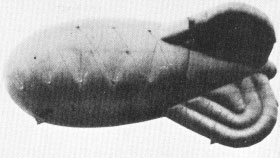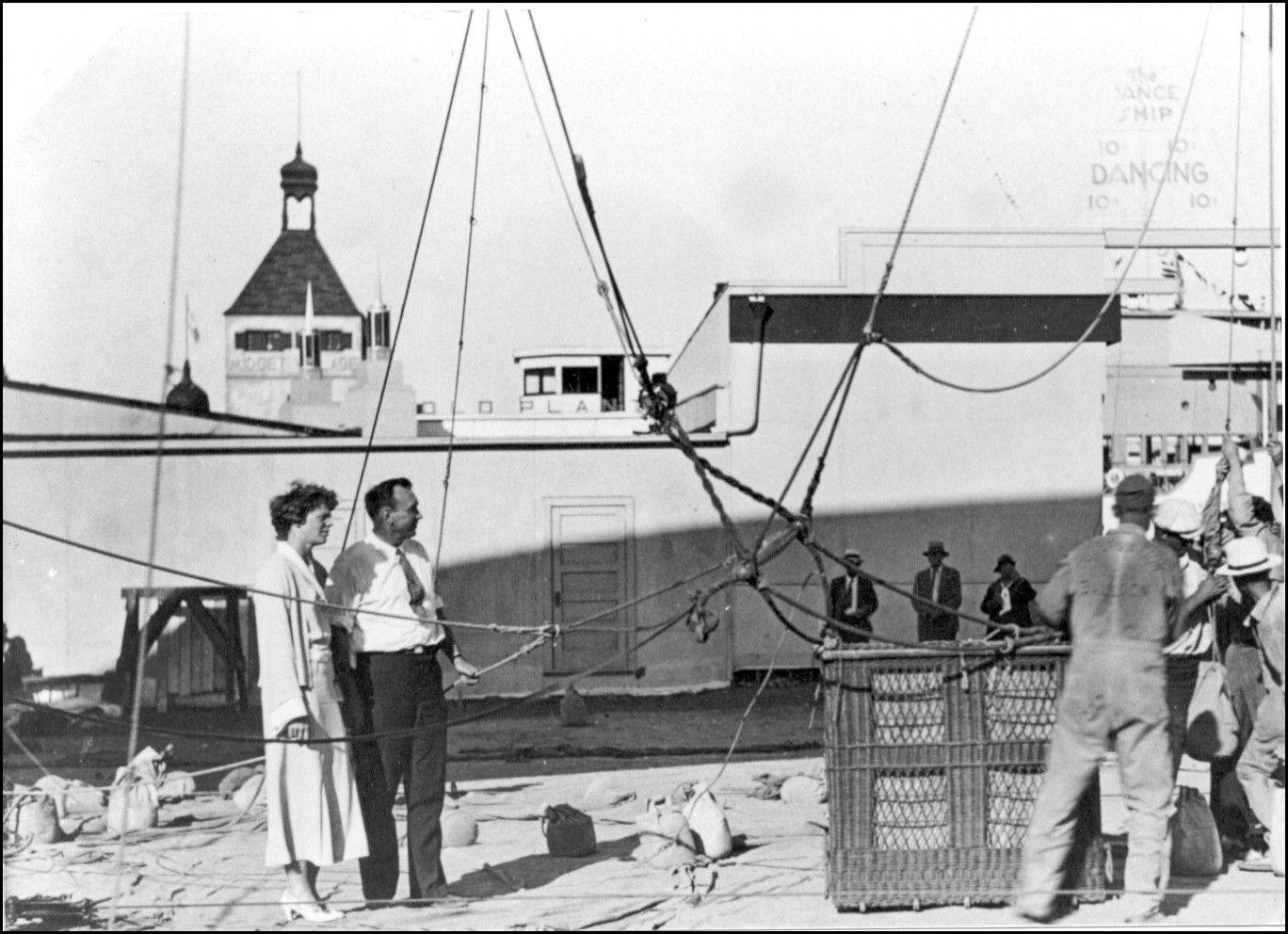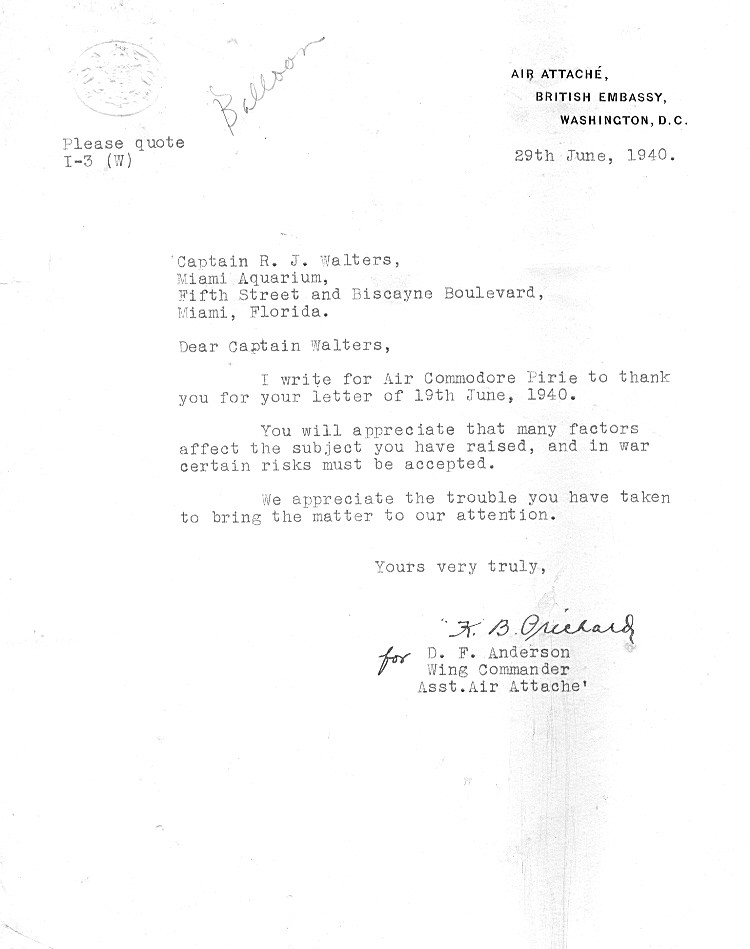 Click
for Site Directory
Click
for Site DirectoryNOVEMBER 2008
Richard Jefferson Walters
Richard Jefferson M. Walters
He used the name "Richard Jefferson Walters" and "R. J. Walters" mostly.
Born 26 December 1883 in Sioux City, Woodbury Co., Iowa, USA
Died 8 October 1968 in Miami, Dade County, Florida, USA
His parents born in USA. His grandfather, Gustavus M. Walter, born in Prussia
and came to USA about 1862.

He was Commander of the Hot Air Balloon
Division which was part of the Signal Corps.
Walters at his desk 1920

Here is Captain Walters with Amelia Earheart in 1933 watching riggers setting up a balloon.
He was very involved during the
1930s in the Miami Air Races, as was Amelia Earhart.
He was in charge of one of the schools for retraining returning soldiers, especially those who suffered physical or mental injuries and teach them new skills. He was in charge of the 'Reconstruction School of Photography" at Camp Meade (1919- 1921). Here is the cover of a 35 page album of the Photography Classes.
The following webpage is from information kindly supplied by:
"Alice L. Luckhardt,
author of The Invincible Alice, about Alice Walters and the Walters
Family".
"War Clouds on the Horizon"
"In the late 1930ís, Richard Walters was always welcoming the dayís
famous celebrities and influential people into his home at 2525 SW 4th Street in
Miami, Florida. Many of the individuals had connections to the military and /
or aviation. One such visit included several admirals from the U.S. Navy,
generals from the U.S. Army and Mr. Howard Hughes (an expert in aviation). They
wanted to speak to Richard alone, so his wife, Mae, and their two teenage
daughters retreated to the master bedroom upstairs. Maeís thoughts circled on
the probably of Richard being requested to re-enter the military service from
which he had already retired. There were all types of speculation especially as
the hours passed with the men talking downstairs. Four hours later the military
personnel along with Howard Hughes left the home. Richard spoke to Mae
privately at first and then tried to explain the situation to his daughters.
The U.S. Government and the military did want Richard back into the service and
for a special secret mission. Mae was against his returning to the military.
As a compromise, she agreed he could do the special requested mission but as a
civilian and be highly paid for his efforts.
This mission involved the United States and England in spite of the fact
that the U.S. had not entered the war by the late 1930ís. Richard, as an expert
on balloon deployment, had served in the U.S. Army during World War I as a
commander of the U. S. Armyís hot air balloon division. Capt. Walters was now
being requested to assist with the instruction of the British military on how to
set up an affective balloon barrage over London and other areas. With
all agreements in place, he was sent to England between late 1937 and early 1938
in a submarine and was gone from his family for weeks at a time.
Balloon barrages were walls of cables to stop incoming dive-bombers.
Anti-submarine barrages were walls of netting to stop submarines. Assistance
was provided to the British in developing the Low Zone Kite Balloons for the
Balloon Command of the Royal Air Force. They would offer additional protection
to heavily populated areas, factories, dockyards and ports in England. The
mission was a success in giving the British the latest necessary knowledge on
these defence balloons.
On a return trip to England in late 1938, he travelled on the ship S. S.
Scythia from New York City to Liverpool, England. He was inspecting the
completed British barrages and felt confident they would help in the protection
of London. The British awarded him a medal for his efforts, personally pinned on
him by Winston Churchill, First Lord of the Admiralty in 1938. Richard
continued to assist the U.S. military as a civilian even after the United States
entered World War II in late 1941."
What is interesting from my viewpoint as a researcher on this item is that there seems to be no official record of his visit, was it kept secret in order to prevent a diplomatic embarrassment to the United States Government who wanted to be seen to be neutral to the European war at that time. I wonder what sort of medal he was awarded by Churchill? I know that in 1936-1938 we seemed to have only one officer in the RAF who was capable of running a balloon barrage as he had been in balloons in the First World War. So the idea of help from a friendly country seems a good idea.
Here is some copies of correspondence that has surfaced from the period in question.

The above letter is by Claude Pepper.
If any reader can indeed shed light on this man and his war time exploits then please contact me at pgarwood@globalnet.co.uk
OR